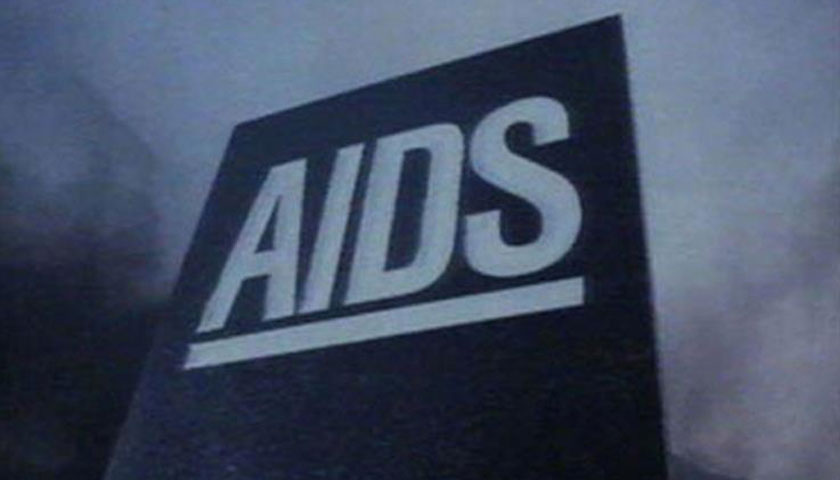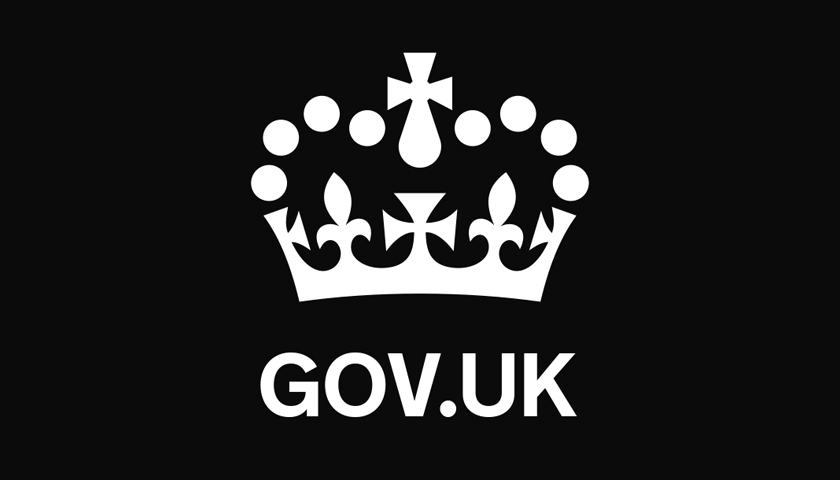As we’re a new site but want to be an overall resource I felt it might be good to showcase some of what I feel are the best ethical marketing campaigns from the past, this one is one which I think was one of the singularly most effective campaigns of all time, it is from 1986:
30 years on and John Hurt’s gravelly tones, and the stark imagery are still etched in the mind of many British people. In an age with things like wkipedia at our fingertips it is perhaps hard to envisage that back in the 80’s there was no quick way to get facts. Aids came into public consciousmess in the early 80’s and there was a huge lack of information, and what there was out there was often misinformation, many people thought you could catch HIV from toilet seats. In the mid 1980s, there was intense media focus on this new and frightening disease with no known cure. People with Aids were often viewed as one of two types of people: haemophiliacs who were often labelled ‘innocent victims’ who may have got the disease from tainted blood transfusions, and gay men and drug users, who were viewed by many as reaping what they sew for what some believed were their hedonistic lifestyles. The then-Chief Constable of Greater Manchester Police, James Anderton, referred to people “swirling about in a human cesspit of their own making”. It’s difficult to believe now, and this attitude was later parodied in 1997 by Chris Morris on Brass Eye where he talks about ‘good and ‘bad’ aids.
There was so much misinormation and scare tactics being spread, particularly by the tabloid press that Norman Fowler, now Lord Fowler, who was then health and social security secretary, and the late Sir Donald Acheson, then the chief medical officer, were convinced that action had to be taken.
“There were people in government and also people in the media who said, ‘Why are you spending all this time concerned about gay people and drug addicts?’,” Fowler recalls. “But that was a minority view.”
As a result of the two men’s lobbying, the government’s drive against Aids was not run from Downing Street but instead co-ordinated by a cabinet committee chaired by the plain-spoken Tory Willie Whitelaw.
“We did it in an extremely pragmatic way. We treated it as a public health issue.”
An advertising agency, TBWA, was commissioned to make adverts which were required to look at changing the habits of a nation. Kevin Thomas, was Head of Art with the firm, he said:
“There really was a lot of ignorance around at that time – people still saw it as a gay disease. All of the team at TBWA were asked to come up with ideas. Many were submitted. I was thinking about the amount we didn’t know about AIDS. We seemed to know so little – and that’s why I thought about the iceberg.”
As well as the tombstone clip, another showed an iceberg which, beneath the surface, bore the legend Aids in giant letters.
The message of both was simple, but apocalyptic – a deadly disease was a threat to everyone, not just the “small groups” who had largely been affected by it so far. The point was driven home by the voiceover by John Hurt.
It was a bold, and powerful message, but with many still seeing aids, and those who suffered from it in such a negative way there was a genuine fear that the campaign could backfire.
Sir Nick Partridge, chief executive of the Terence Higgins Trust, the sexual health charity which was set up in response to the emergence of HIV consulted on the campaign. “”It was done with considerable degrees of secrecy, I had to go to TBWA’s entrance at 8pm and go through the goods entrance, such was the degree of political sensitivity.
“There were those who said the adverts increased fear more than understanding. I think they did both. They stopped a lot of people from having any sex at all for quite some time, but one upside was that they got everybody talking about sex and safer sex.”
The iceberg and the tombstone ads are by far the most remembered part of the campaign, arguably of any campaign of that time period, but there was also a leaflet was sent to every household in the country and a week of educational programming was scheduled at peak time on all four terrestrial channels.
“They were tremendously effective. They were visually so striking,” says Dr Sarah Graham of Leicester University, who recently organised an exhibition of Aids poster campaigns in 2013 “People had to watch because it was so extreme.”
The impact was so immediate that it was widely imitated around the world.
Lord Fowler says: “There were obviously the columnists who said this was disgraceful, you know you’re sending these leaflets and they can get in the hands of 16 year old children and obviously there was that risk. But when it came to it the public had the common sense just to read them and very, very few people complained about it. They accepted that the government, the health department could give information about health issues as long as it was done in a practical way, and it was.”
Looking back now, there are some who accuse the government of scaremongering, to this Lord Fowler says: “I think the campaign was extremely effective, I think that all the follow up material shows that the public saw it, that they understood it, that they remembered the campaign and most of all it actually did change habits, it did modify habits.”
“And our figures were better than virtually anywhere else, I think anywhere else actually in Europe and it had this knock on effect to general sexual health as well and the figures there actually improved. So I think however you measure it, the campaign had real effect and real impact.”
And in this he is right, the target of the campaign was HIV, but it had a real effect on all STI’s. Following the campaign, the number of diagnoses of gonorrhoea in England and Wales dropped from around 50,000 in 1985 to just 18,000 in 1988 – and had dropped to a 20th century low by the mid 1990s. Syphilis dropped from around 1500 annual cases in the mid 1980s to around 150 in the mid 1990s. As for diagnoses of HIV itself, which were over 3,000 in 1985, they dropped by a third in three years. The number of new diagnoses stayed relatively stable until 1999. It has since more than doubled to 7,000 new diagnoses each year.
Professor George Kinghorn is the Director of Infectious Diseases at Sheffield Teaching Hospitals NHS Trust, and one of the UK’s leading authorities on sexually transmitted infections says:
“The only time in my lifetime that STIs have plateaued was after the AIDS adverts in the eighties. But sadly I think what we gave them (politicians) was a tick in the box. What you have to do with any form of health education or promotion is to sustain that effort because you have new generations of young people.”
This was an expensive campaign, but as can be shown it changed society for the better. It’s one of the few campaigns which can be said to have influenced a whole country, and in doing that, ensured that UK strategy was consequently imitated by other countries, although these varied according to cultural backdrop. The amazing thing about this campaign, apart from its huge immediate impact on the actions of those in the UK, is of how strongly it is remembered now. This is a campaign etched on the consciousness of all who saw it, and that’s no bad thing.
Links
http://www.bbc.com/news/magazine-15886670
http://www.campaignlive.co.uk/article/history-advertising-no-109-governments-aids-campaign/1308298
http://news.bbc.co.uk/1/hi/programmes/panorama/4348096.stm



just one thing, stuart. you have jumped to the conclusion that the adverts were what changed people’s behaviours, but actually the fear of aids was so great, that this fear alone forced many people to rethink their lifestyles and sexual habits. prior to aids, whatever sexually transmitted disease you might contract, all you needed was a visit to the hospital sex clinics and to take a dose of anti-biotics and your problems were over. so we were all still living with the promiscuity that had been growing throughout the 20th century and, I think, peaked in the 60s when alongside anti-biotics we got freedom from the procreative aspect of sex. how do you know the ad campaign was what changed people’s behaviour? by the way i was someone who, having had an aids contact in 1986, recieved one of these leaflets through my door, and it only added to my anxiety.
Thanks for that viewpoint Mark, it’s one I hadn’t considered. I don’t believe it was so much the ad campaign that changed behaviour as such, more the education and information that came along with it, I tend to agree that the ad campaign could well add to anxiety as it is powerful, and arguably needlessly scary, that being said I do feel that the fear it created lead to, at least in some cases, more education. I should caveat that with, a lot of what I am writing in this piece comes from reading reports and such like after the event, I was 10 in 1986 and although I do remember the campaign, which says a lot about the effect it did have, I was not in a position to understand it, and in many ways what it represented as an adult would. As such it’s important to get perspectives like yours as they are viewpoints that the official reports do not cover, so thank you very much, my conclusions are based on much of what I read afterwards on the campaign so it is interesting and important to get these kind of comments, thank you so much, a) for reading, and b) for giving a different and just as important and correct perspective, and 3) Giving me, and hopefully other readers something more to think about with regards to the campaign and its outcomes.